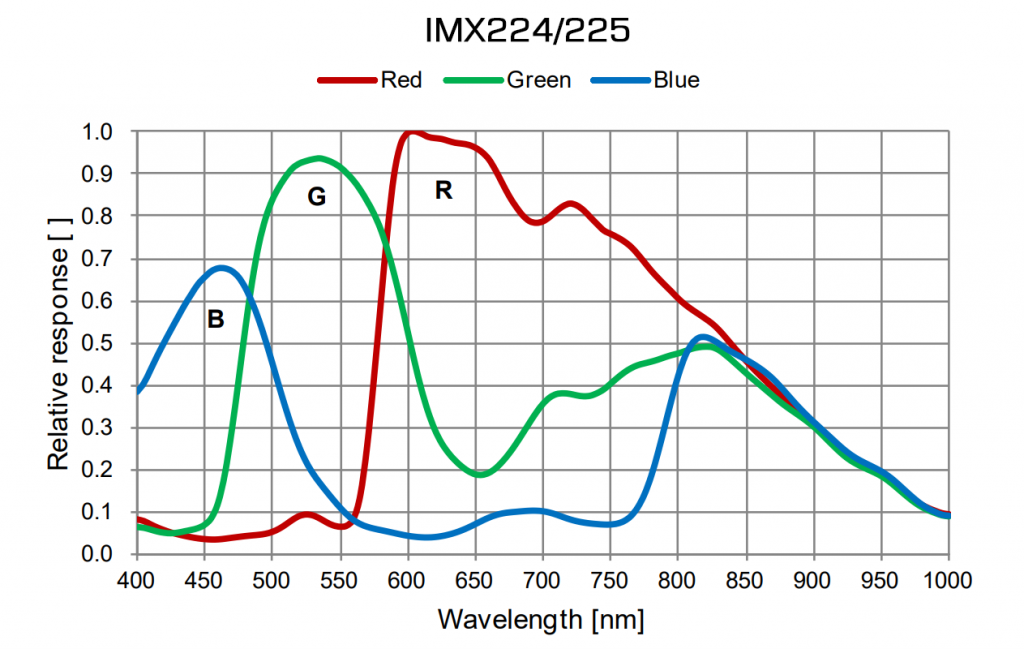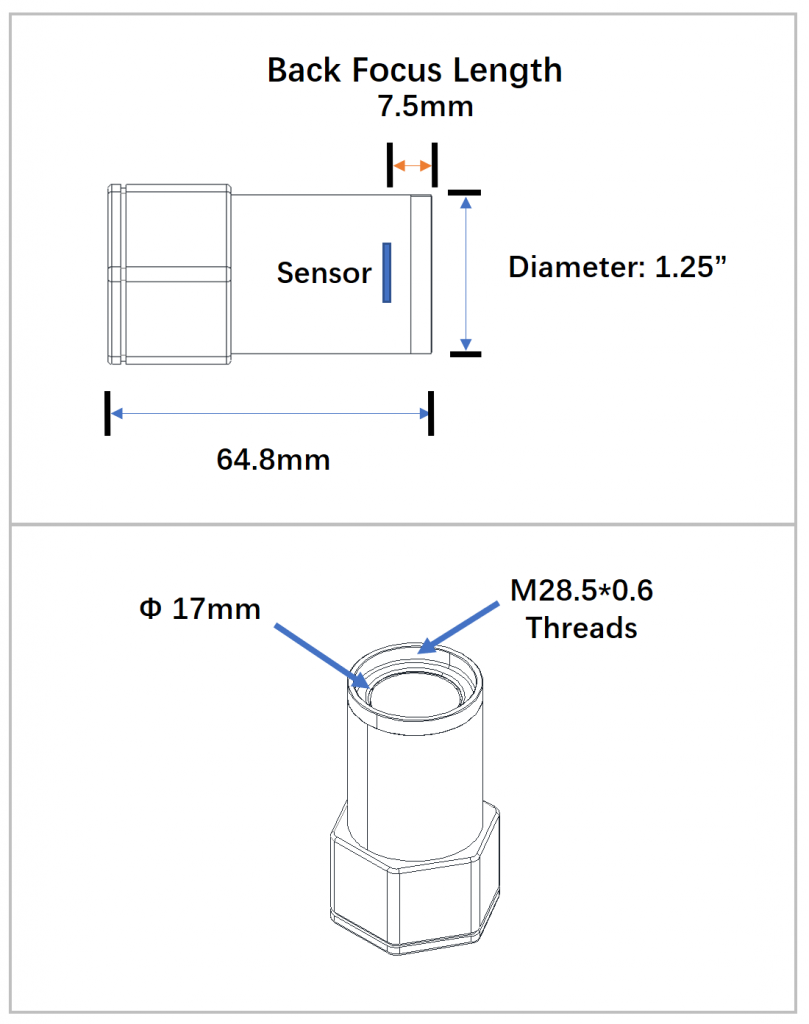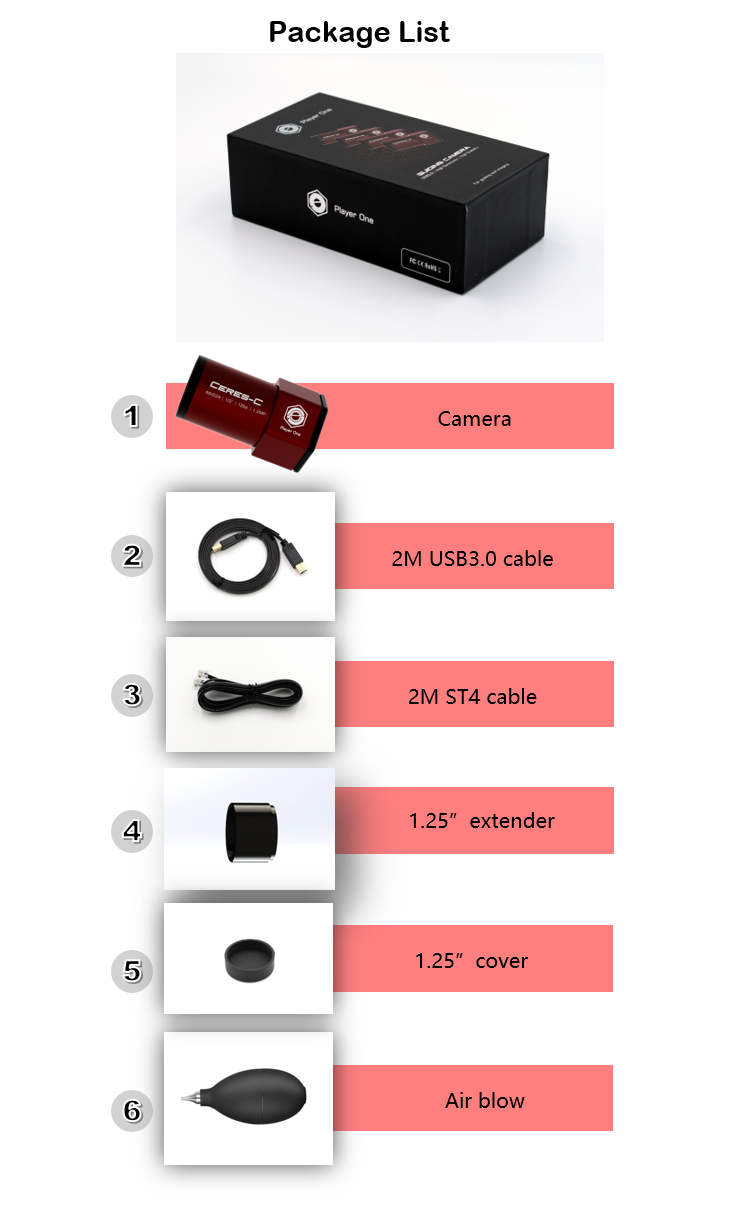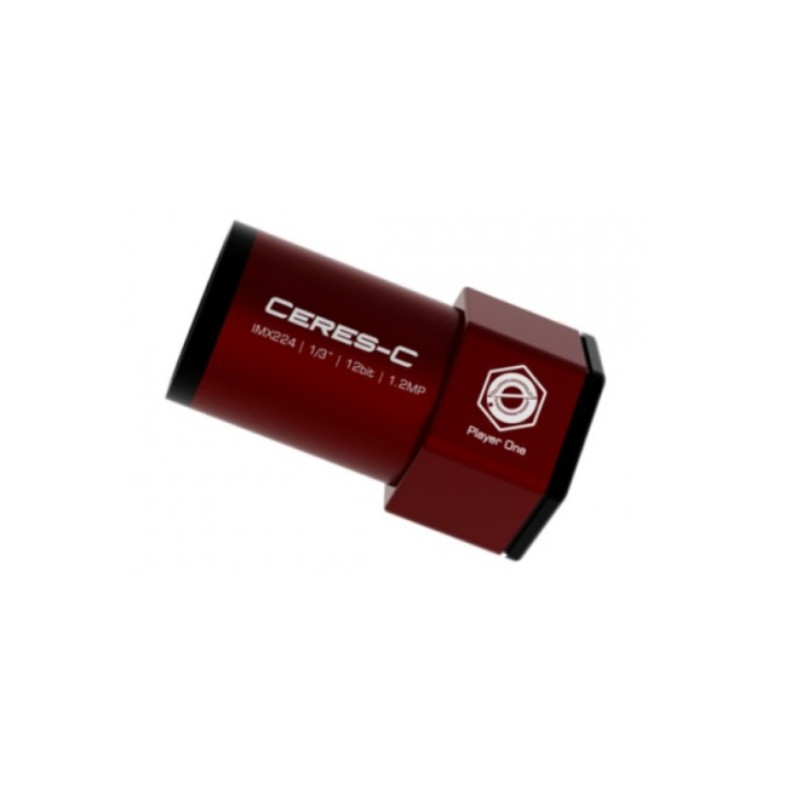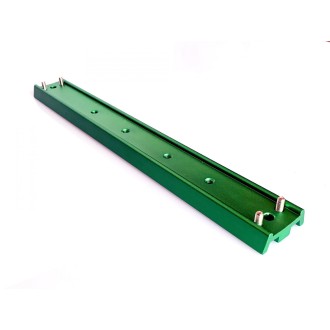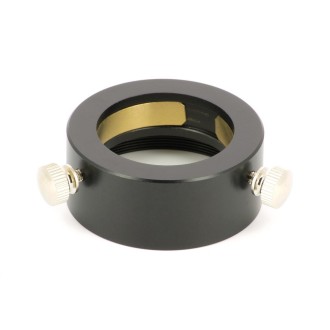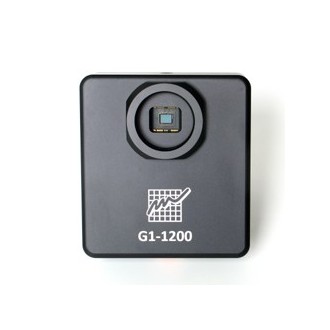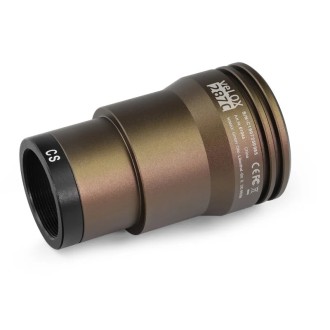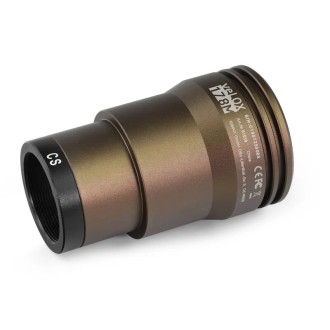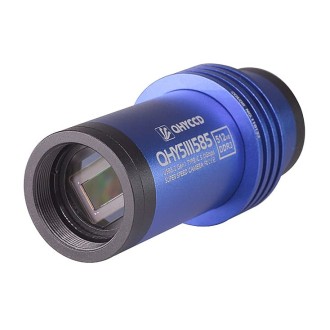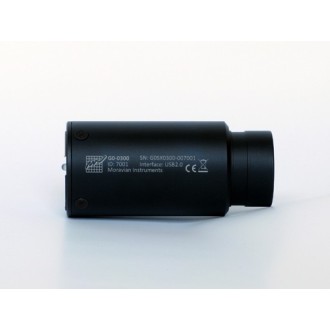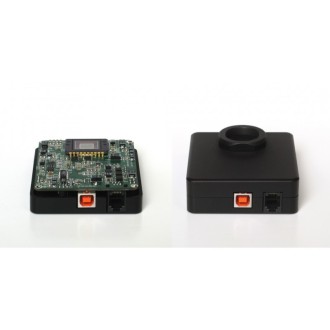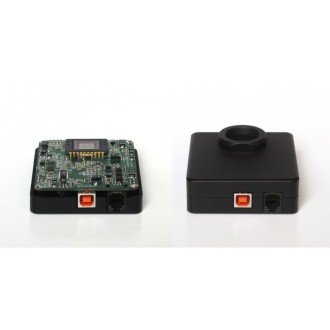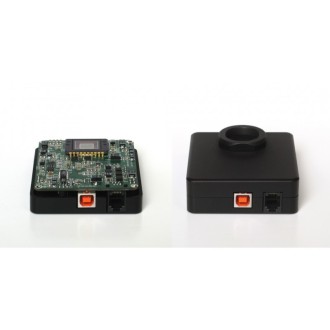Guided Camera Player One Ceres-C (IMX224) Color
The guidance camera series of Player One Astronomy, also known as the dwarf planet series, is designed for guidance and imaging. This series includes 3 subseries, Ceres, Sedna and Xena.
| Carrier | Description | Estimated Delivery | ||
|---|---|---|---|---|
 |
Home delivery - International | Home delivery - International |
Friday, 2 May - Friday, 9 May |
|

Home delivery - International
Home delivery - International
Estimated delivery:
Friday, 2 May - Friday, 9 May
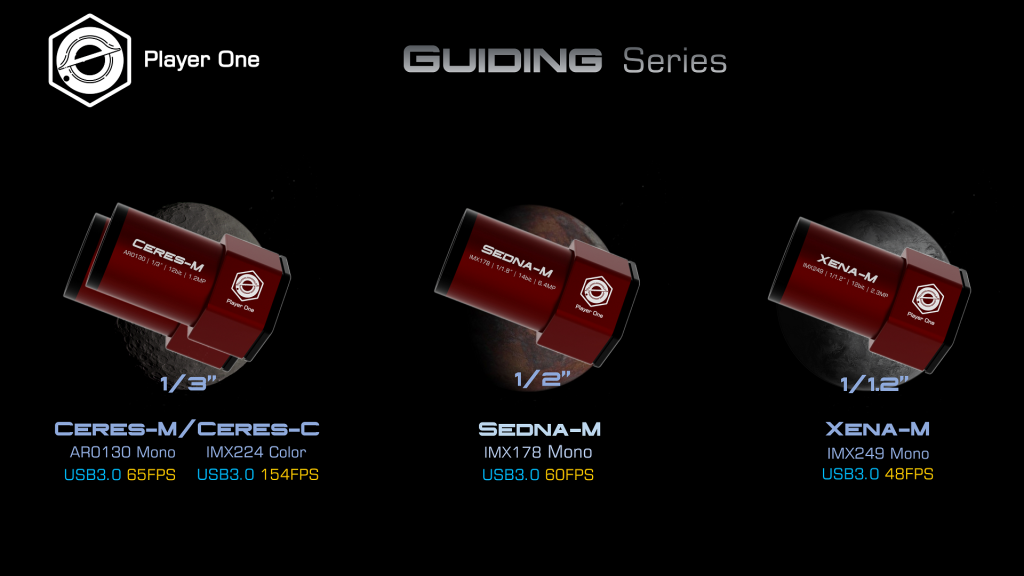
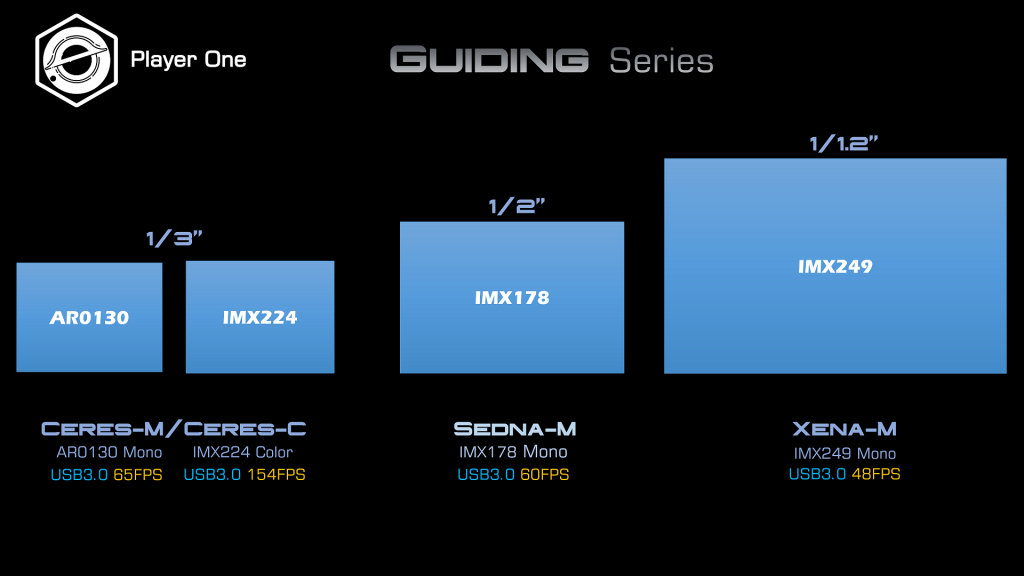
Product description

Ceres-C is a guided camera developed by Player One Astronomy, which adopts the 1/3" format Sony IMX224/225 sensor. The pixel size of 3.75um accommodates a well depth of 19.4ke with a total of 1.2MP (resolution is 1304*976), and the diagonal is 6mm.
Highlights
The Dwarf planet series integrates a USB3.0(500Mb/s) data port, which can provide more than 10 times the speed of a USB2.0(60Mb/s) device. Whatever you want to do guidance or imaging, this camera series can handle it very well.
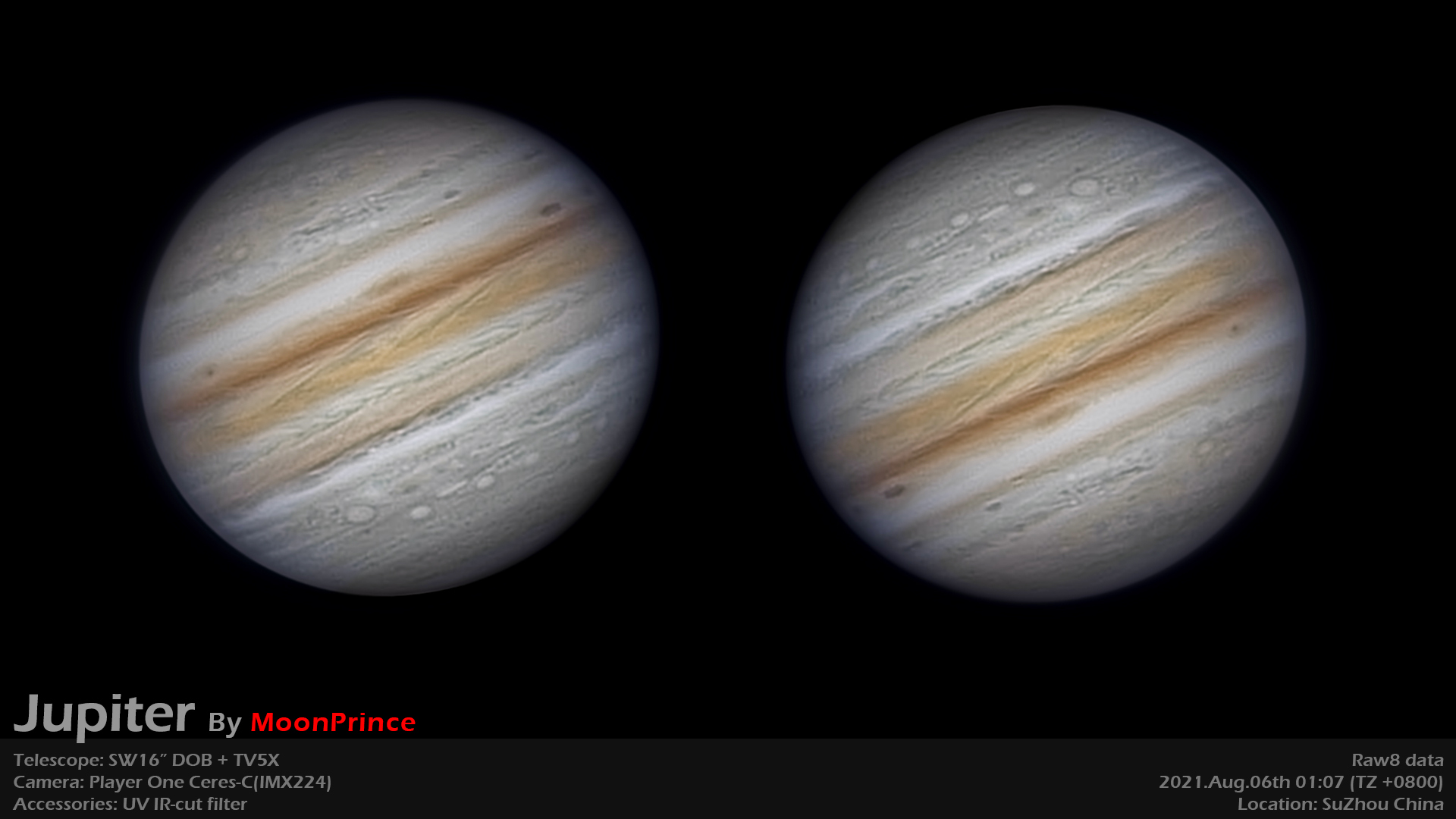
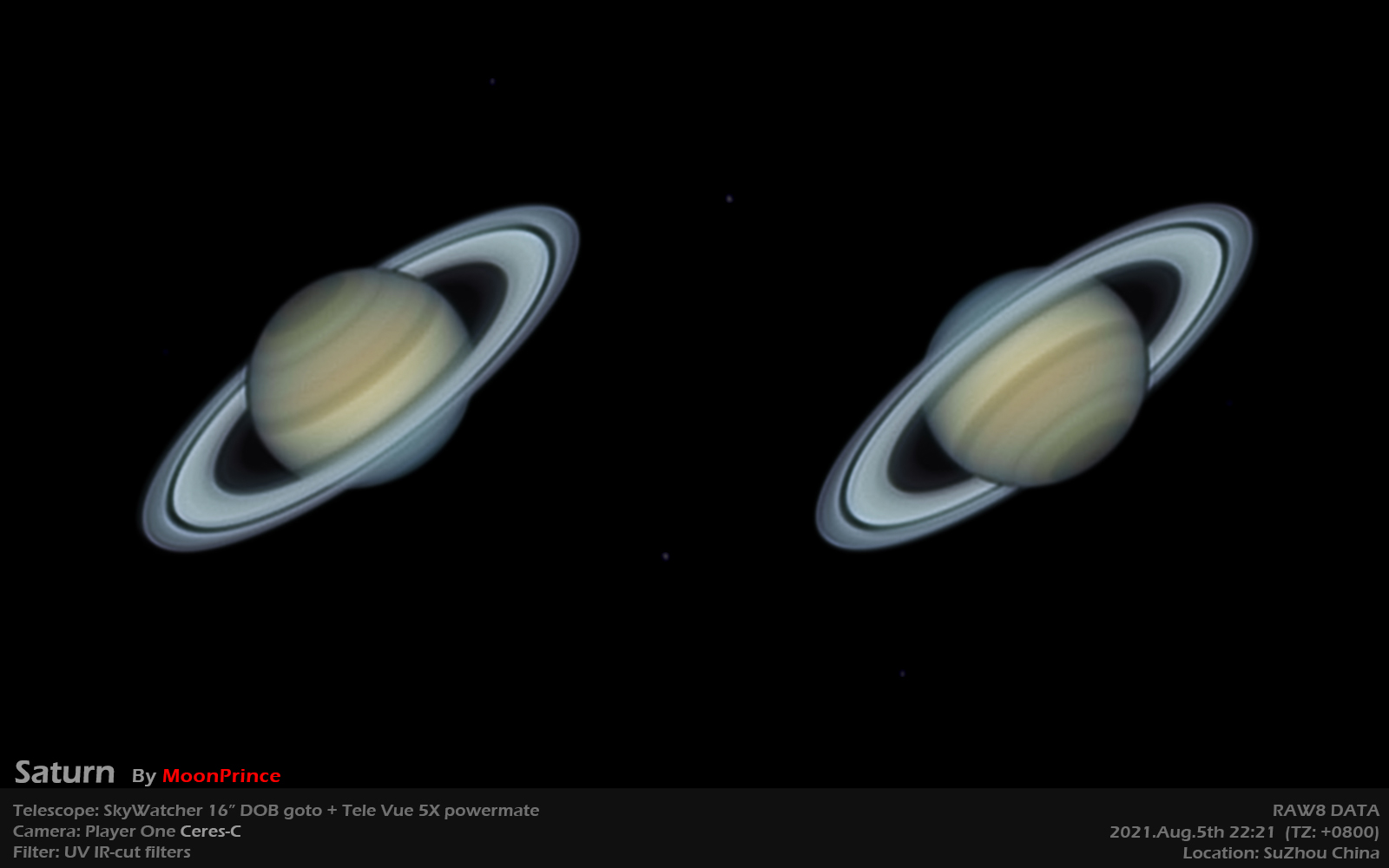
The diameter of the dwarf planet camera is 1.25″, it can slide into the 1.25″ mount of the guiding telescope, which makes the whole setup shorter.
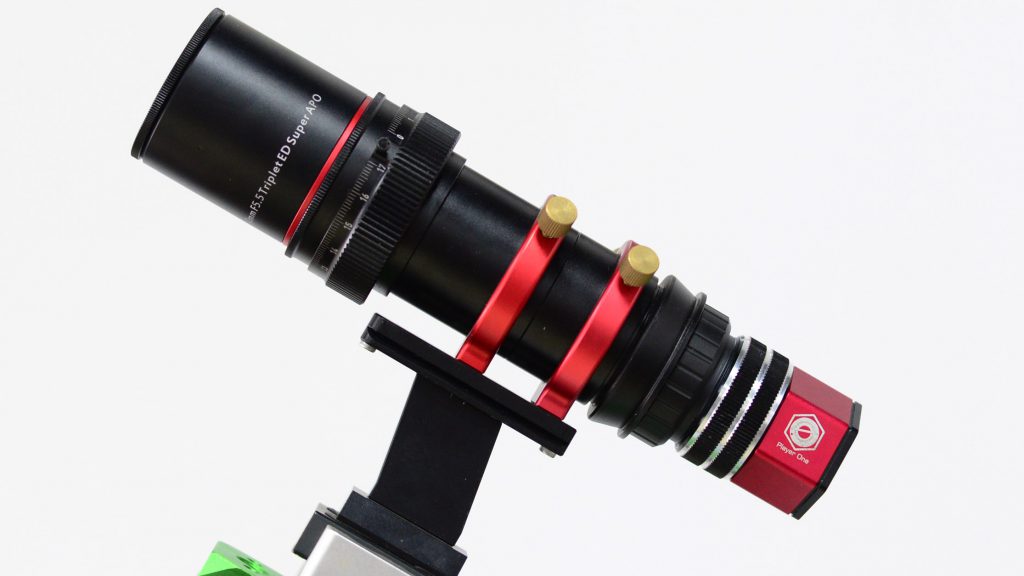
With a CS 5-100MM lens attached to the camera, it can also be used as a guide or finder.
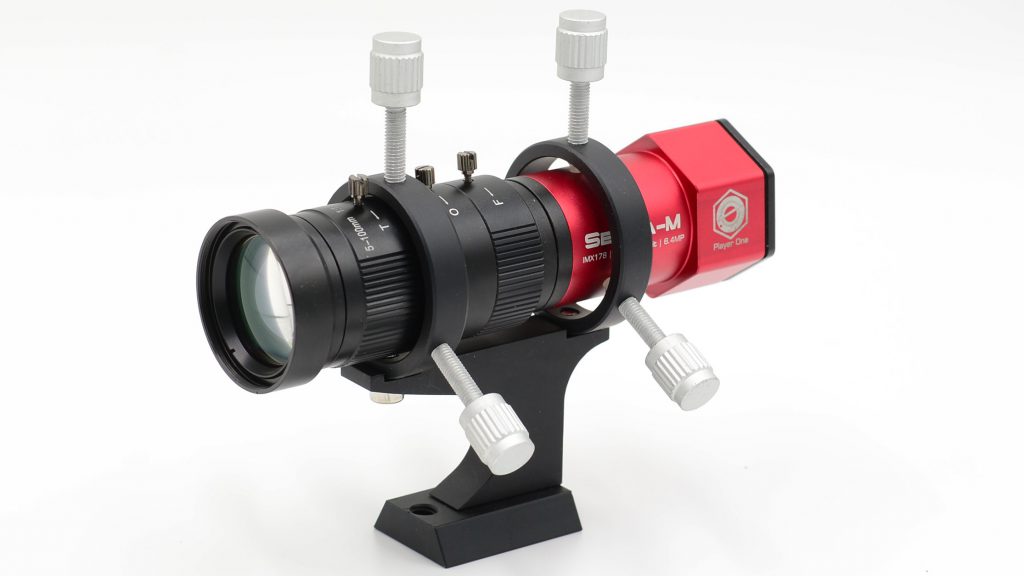
Features:

The name of the Player One guiding cameras is interesting. The guide camera is smaller than the planetary camera, so we chose dwarf planets to name it.
The size of each dwarf planet represents to some extent the size of the camera sensors. Ceres we will name with a 1/3″ sensor camera, and in the case of Xena, we will name it with a 1/1.2 inch sensor camera. All names will be engraved on the camera housing.
Download drivers and software: https://player-one-astronomy.com/service/software/
Download manuals: https://player-one-astronomy.com/service/manuals/
State-of-the-art design
The guide cameras developed by Player One Astronomy use the technological regular hexagon to build the main body line.
DPS Technology
The guide cameras of Player One Astronomy have DPS (Dead Pixel Suppression) technology. The DPS is anaylse many dark frames to find thoes fixed abnormal pixel and record the map in the camera memory. In the images, in each exposure frame, the dead pixel position will receive an average value depending on the active pixels around that abnormal pixel.

Over-voltage and over-current protection mechanism
Player One cameras produced by Number One ensure the safety of your camera and other equipment through overvoltage and overcurrent protection mechanisms.
Data port
When the camera is connected to the USB3.0 interface and full resolution preview is used, it can reach 154 FPS in RAW8 mode (10bit ADC). When recording images, since the actual writing speed will be affected by the writing speed of the hard disk itself, when the writing speed of the hard disk is slow, the recording may not reach the theoretical speed. It is recommended to use a high quality solid state drive to record data in order to take full advantage of the camera's performance.
Use the ST4 guide cable to connect the camera and the AUTO GUIDE port on the equatorial mount for guiding.
Performance
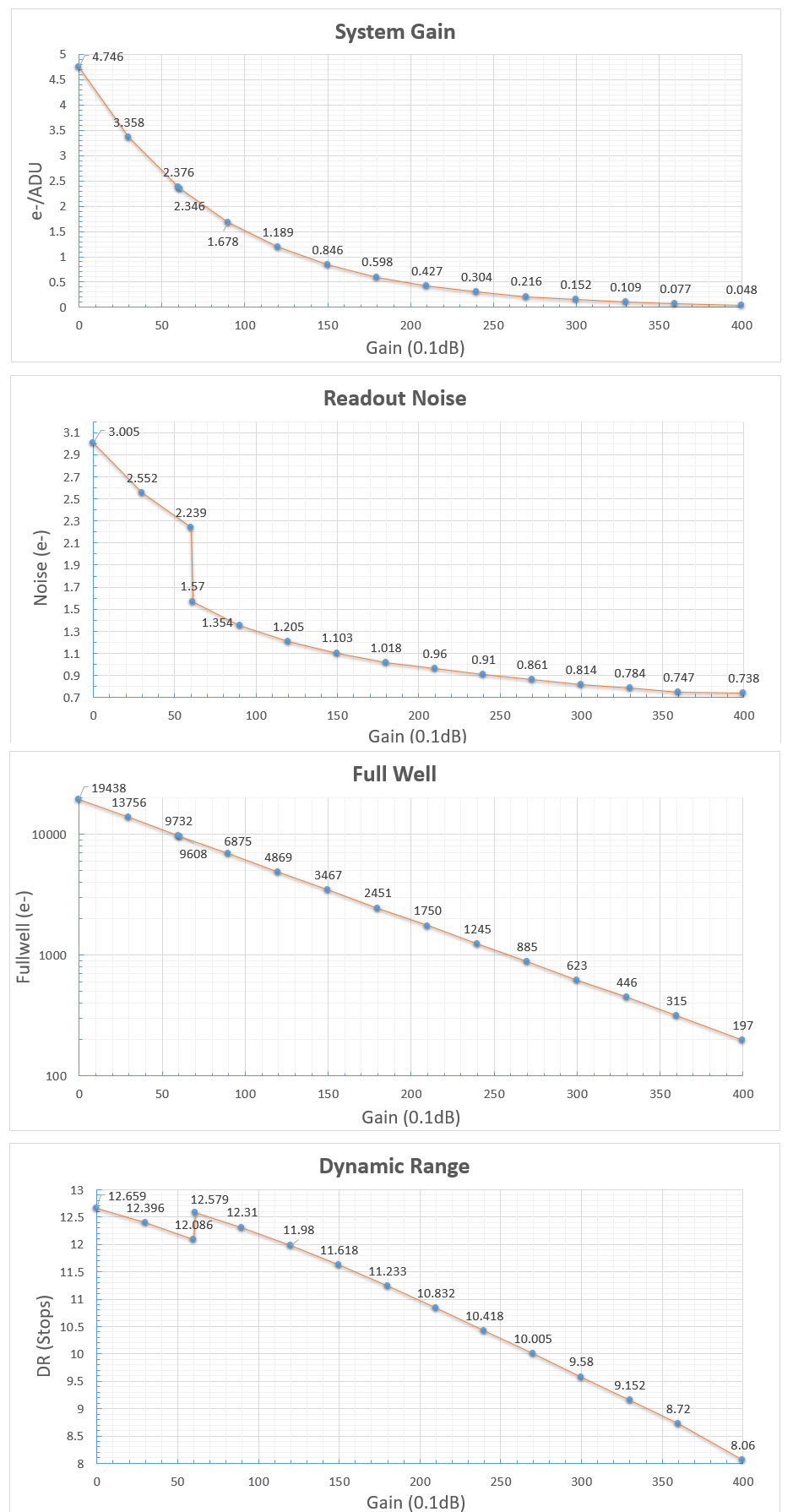
Read noise
As for read noise, we solemnly promise that all values are obtained from real tests. And for users, Sharpcap 4 can be used for testing. SC4 has a feature called Sensor Analysis, which provides a very simple way to test read noise.
We have written a tutorial on our web site: https://player-one-astronomy.com/service/manuals/
After many rigorous read noise tests, the Ceres-C camera can achieve a low read noise of 0.75e with a gain of 350.
If you are interested in performing read noise tests, you can try it yourself, which is very simple.
QE curve
